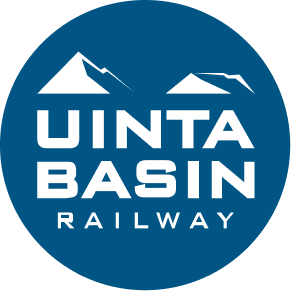Why Rail
The Coalition has identified rail as the preferred transportation mode to transport goods in and out of the Uinta Basin.
Rail significantly increases the capacity to transport oil, manufactured goods, and agricultural products, enhancing economic diversity and improving transportation efficiency.
Rail will be a common-carrier freight transportation service equally open to all freight shippers of all goods and services, including oil & gas, mining and agriculture.
Heavy trucks have higher air emissions, increase highway congestion and increase public costs on highway maintenance and capacity expansion. Additionally, long-haul trucking is more costly than rail.
Pipelines can only transport oil & gas and because the waxy crude oil extracted in the Uinta Basin has to be heated, increasing costs.
Environmental
The U.S. Surface Transportation Board is the lead federal agency responsible for preparing the environmental impact statement in compliance with the National Environmental Policy Act (NEPA). The Coalition will support the STB and its third-party contractor as needed throughout this process. We are committed to minimizing and mitigating environmental impacts where possible and to meeting all federal, state, and local environmental regulations.
Public Lands
Mitigate Impacts: We are working with state and federal agencies in areas of the route that cross public lands to identify concerns and mitigate impacts.
Tribal Lands
Working Together: The railway may cross Ute Tribe lands. The Coalition is working closely with the Ute Tribe to identify areas of concern and sensitivity, including cultural resources, natural resources, and fish and game resources, and will develop decisions in cooperation with the Ute Tribe to minimize impacts and mitigate any that might occur.
Endangered Species
Local Knowledge: Field experts are knowledgeable of the unique plants and animals in the Uinta Basin and will use field visits and surveys to identify if any habitats exist so we can proactively make refinements and mitigations to potential impacts.
Water
Water Protection: The STB will identify wetlands and streams so that the Coalition can work with the STB and other federal, state, and local authorities to minimize and mitigate potential impacts.
Noise
Reduce Noise: The STB will quantify noise and vibration impacts of the railway. The Coalition has sought to locate the railway at the greatest distance feasible from communities, schools, and residences to minimize noise and vibration impacts.
Schedule
The environmental review process and schedule is driven by the Surface Transportation Board.
SPRING 2019
NEPA
kickoff (Notice of Intent)
SUMMER 2019
Public
meetings & comments
(Scoping)
FALL 2020
Draft environmental document for review, public meetings & comments (Draft EIS)
FALL 2021
Final environmental document, public comments (Final EIS)
2025
Design
2026-27
Construction
Who We Are
Public-Private Partnerships
The Uinta Basin Railway is a preliminary public-private partnership. A public-private partnership is a unique opportunity for collaboration to fund, build and operate important infrastructure projects. This creative partnership allows an important project like the Uinta Basin Railway to move forward faster.
Project Partners
The Seven County Infrastructure Coalition is the public partner responsible for planning and studies, which includes the environmental clearance process, preliminary design and financial modeling, and is the project proponent throughout the environmental clearance process led by the federal lead agency.
DHIP Group is a private partner responsible for financing and commercialization of the railway.
Rio Grande Pacific Corporation is a private partner responsible for design, operations and maintenance of the railway.
Breakdown of Funds
PUBLIC FUNDS
The public funds authorized for use on the railway come from mineral lease fees. Oil and gas are minerals for which producers pay a mineral lease fee to the federal government as part of the Mineral Lands Leasing Act of 1920. The government then gives part of those funds back to the state to be used within communities where the minerals are extracted.
The Utah Permanent Community Impact Fund Board manages these funds and has granted $27.9 million to the Seven County Infrastrucutre Coalition for planning and studies in the environmental clearance process.
PRIVATE FUNDS
The private industry will pay an anticipated $2.2 - $2.5 billion for construction, operation and maintenance of the railway. This financing will be paid through contracts and service fees for use of the railway.
Project Toolkit
PDF — Fact Sheet
Connect
Connect with us through social media!
UintaBasinRailway.com
Thank you for visiting. This is the project website for the Uinta Basin Railway provided by the Seven County Infrastructure Coalition.
UintaBasinRailwayEIS.com
You can also visit the project website for the Uinta Basin Railway Environmental Impact Statement (EIS). Site and content developed and maintained by the Surface Transportation Board, the lead federal agency responsible for preparing the Uinta Basin Railway EIS. The Seven County Infrastructure Coalition has no role in determining the content of the EIS website.





















